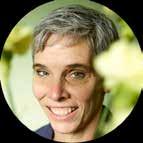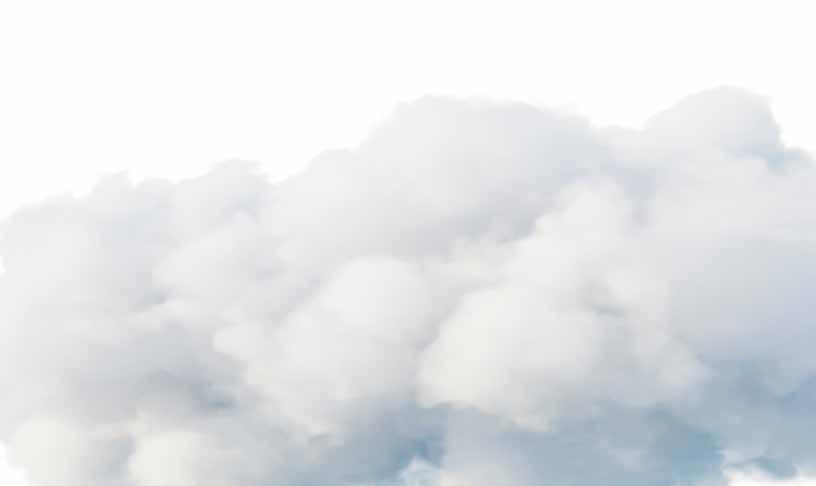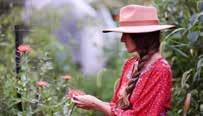Holistic Living
PAWS & THINK
Lives Through the Transformative Power of the Human-Dog Connec tion



Lives Through the Transformative Power of the Human-Dog Connec tion


(Abridged version)
Writer / Stephanie Maru
I felt the first chill of fall in August in Indianapolis this year. It was like the spark of the first crackling of a fireplace underneath the cosmos. It awakened a dormant part of me and for the first time in a long time, I felt one with the seasons. One with Autumn coming. One with the soon-to-be falling leaves and overgrown sweaters I love to wear.
Reiki awoke in me, all over again. New friends arrived in different ways from different places. Old friends arose from the woodwork. There was a challenge that brought on new insights. And then there
these cozy trees, dimpled with a playful blend of sunlight and shade.
"I dedicate this meditation to freeing myself and others, so that all beings can be free of suffering," I thought as I sat on my yoga mat.
And just in that moment, as I'm sitting cross-legged, do I get stung by a bee.
I continued with meditation and was still able to find that calm center that can’t be shaken.

Later on my hike, I ventured alone in this remote world of light and shade, breezes, creeks, yellow flowers, green plants hugging pathways tenderly brushing against the bare, brown skin of my legs. I found a tree by the creek where I could sit on its roots. I slipped off my shoes and settled into the wild woman that I am when I'm not working at a library.
Thanks to Stephanie Maru, our inspired reader, for this essay submission. For more of her inspired words and art, go to sdmaru.weebly.com.

For full essay, please click the QR code here.







INDYHOLISTICHUB.COM
INDY HOLISTIC HUB
COUNCIL: KJ MCGLINN KJ MEDIA
COLETTE PELLISSIER ILLUMINATED LEADERSHIP NEIL MCGUFFOG AT THE CORE
CUSTOM PUBLISHED BY THE TOWNE POST NETWORK, INC.
FOUNDER/CEO TOM BRITT
TOM@TOWNEPOST.COM
PRESIDENT
JEANNE BRITT
JEANNE@TOWNEPOST.COM
PRODUCTION COORDINATOR ERIN TURK
CREATIVE DIRECTORS VAL AUSTIN TONI EADS
DIRECTOR OF DIGITAL SERVICES DEVON DEAN
DESIGNERS
TARA MCCARTY JENNIFER MELLOAN
COPY EDITOR JON SHOULDERS

The journey toward greater consciousness is a sacred one. While it might be marked by moments of epiphany, the vast majority of the journey is comprised of very ordinary moments. It’s a beautiful design, really, that teaches us to steep in the holy sacredness of that which is utterly ordinary.
“After the ecstasy, the laundry.” - Jack Kornfield
As divine beings having a human experience, one of our primary duties is to translate the promise of higher consciousness into the physical realm. Not just in rare, epiphany moments, but all the time. Every day. We don’t need to look very far, then, to see where the service of our light is needed. If we just pay attention to what is right in front of us, we can come to know our daily life as both our most devoted teacher, and as a skilled sherpa
Writer / Colette Pellissier
guiding us toward the points of service that are uniquely ours to embrace.
How, then, can we build a more connected and intentional relationship with our lives and our own sacred service?
Remember, we don’t have to look far. Perhaps the most basic unit of connection to our daily lives can be found in our ordinary acts of communication. We’re communicating all day long, in many waysinternally to ourselves, externally to others, verbally, physically, energetically. Pause for a moment to consider how the quality of conversations that you’re having with yourself, with others, and with the forces that guide your life actually affect how connected you feel as your day unfolds.
Communication is the currency of
connection. The experience of connection is a higher-frequency state of being. It’s up there with inspiration, happiness, joy and contentment. Like oil and water, it’s incompatible with lower-frequency states such as anger, fear, righteousness, frustration and disappointment. We simply can’t access the place of connection within us when we are occupied by lower-frequency states of being.
In this way, we can see how connection is an inside job. It might seem on the surface that our experience of connection to other people resides in them - out there - how they conduct themselves, and how receptive they are to us. But the deeper truth is that our experience of connection resides solely inside of us - in our hearts and our minds. If you long for a greater experience of connection, you’ll find that a few proven communication practices can help.
ASSUME POSITIVE INTENT. Our minds love to bridge gaps in information. We make stuff up all of the time. Humans are excellent at creating interpretations. The trouble happens when we are convinced that our interpretations are accurate. They become a filter by which we receive what is going on around us. If the filter is false, though, it means that everything we are taking in is tainted. Try this on for size; if you’re going to make stuff up (which you are), why not make up a story where everyone wins? Where the other person means well, whether you agree with the message or the delivery. Where they care enough about a situation or cause to share their take on it. Where they are entrusting you with an important piece of insight. Notice how this practice shifts your inner state and your capacity to stay present and connected.
CURIOSITY OVER CONCLUSIONS. Seek to understand, rather than agree or disagree. Openness builds connection; judgment depletes it. Even though it is not widely modeled in current times, it is possible to be respectful of points of view that differ from our own. Notice when you might be listening for your own agreement or disagreement, or where you are listening to form your rebuttal…and let all of that go. Show up instead with the intention to witness the other person in front of you, and discover how to gently hold both what they believe and what you believe at the same time. Notice how different your quality of connection within yourself and with the other person can be when you bring a neutral or open focus, rather than a more contracted focus of evaluating, correcting or judging.
DEVELOP ENERGY MASTERY. At its most fundamental, communication is an energetic exchange. You get to decide the quality of energy that you trade within yourself and with others. It’s far easier to manage our interactions when we have good awareness of our bodies and the energies that move in, through and around us. Think of yourself as an instrument, such as a flute. The notes you sound will be more clear and resonant when your instrument is tuned and well-maintained. Learn how to communicate cleanly by discharging your energy in generative ways.
Read on for more energy mastery tips from Paula Lord!

From the competitive arenas of rhythmic gymnastics and professional dance to the enlightening realms of Pranic Healing, Paula Lord has navigated a life filled with achievements, challenges, and profound transformations. With a rich background as an elite athlete, a scholar in physics, and a passionate healer, Paula embodies a spirit of adventure and transformation.

Colette Pellissier is a Lightworker in corporate America offering Executive & Team Coaching and Organization Development services. She founded Illuminated Leadership as a doorway to develop conscious leaders and guide growth-oriented professionals through the changes caused by evolutionary pull— in their lives & relationships, in their careers and in their businesses. www. illuminatedleadership.com

Prana-informed
How well we communicate with others is a reflection of how well we communicate with ourselves. Compassionate, civil and productive communication with others is only possible when we are compassionate, civil and clear with our self-talk.
Two factors which must be practiced and developed are awareness and objectivity.
1. AWARENESS:
to register more and more subtle cues that our body is always offering. Most of us have learned to turn off our sensors and we may have become numb to sensations. The good news is we have simple and fun practices to reconnect our brains and our bodies, and to safely recover our ability to register sensations.
Awareness of self can be developed physically (which will lead to emotional and mental awareness) only when we are willing to experiment and ask the question, “What am I feeling?”
2. OBJECTIVITY:
sensations, we are often programmed to automatically give a cause, an excuse or an explanation for the sensation…we jump to conclusions. Have you ever done this with another person? Made assumptions about their behavior without knowing the various details of their current life experience? We react only to find out later the tremendous stresses they were under, and it requires us to apologize for our reactive speech or actions. Right? It’s pretty common.

We can improve and grow by being more objective about our inner experience. Here is an example:
Let’s say we are practicing basic squats. We may feel pain in our knees or lower back
Transformative holistic offerings include: - Pranic Healing - Prana Posture
- Prana Yoga
- Prana Walk

















Dermatologist







Provided by Trinity School of Natural Health
Eyes are the window to the soul. But did you know that your eyes can also reflect your physical health?
Our eyes tell a story. We can often look into someone’s eyes and determine how their day is going, or know if they’re tired, sad or not feeling well.
Iridology takes everyday observations a step further by allowing practitioners to analyze someone's internal health by observing the eye using high-resolution images. It is a structured scientific discipline requiring extensive experience and training to assess an individual's eye accurately.
An iridology certification is one way to gain experience and practice assessing the eyes. With this certification, you also can provide supportive tools based on your findings.
So, how can iridology help someone improve or manage their health? Read on to discover five ways an experienced iridologist can provide insight into an individual’s health.
Our irises contain thousands of nerves. These nerves are connected to the organ systems in the body via the brain. Consequently, the health of the body is recorded by these nerve impulses through the brain and onto the iris.
Blood vessels and muscle fibers are also present in our irises. The information recorded in these vessels and muscle fibers can give an iridologist a wealth of information. By analyzing the fibers in the iris, an iridologist can offer clients an overall assessment. In conjunction with a client’s health history, iridology findings can help
practitioners recommend lifestyle changes to support the client.
The eyes can also be monitored for positive or negative changes. This can help the iridologist alter their previous recommendations and suggest new ways for the client to improve their wellness.
In the practice of iridology, health tendencies and potential imbalances can be discovered through spots, discoloration or changes in the fibers of the iris. The iridologist then uses radial and clocklike charts to determine which area of the body may be involved.
The affected iris is also important to the iridologist. For example, problem areas in the left eye signal potential imbalances in

the organs on the left side of the body, whereas the right iris corresponds with organs on the right side.
Our genes affect our irises and the rest of our bodies. By looking at a person’s iris, an iridologist can determine what lifestyle choices would be the most impactful for them. Even if the client isn’t currently experiencing problems, iridology can help them embrace positive habits based on their irises’ genetic markers.
4. ANALYZING ORGAN FUNCTION
Without invasive tests, knowing if our organs are properly functioning may be difficult. Iridology can provide insight into which organs have potential concerns. By gathering this information, an iridologist can make suggestions to support specific organs or systems, and address other factors that may be contributing to the client’s current health state.
5. NUTRITION
Genetics only tell a small part of our story. Our environment, diet and lifestyle can play an even larger role in our health. By examining the iris, an iridologist can help assess a person’s potential digestive health and potential nutritional needs.
In short, iridology assessments can give clients a tool to help them support their bodies and become more aware of potential health concerns. The iridologist can then work with their client to address these areas of health and wellness.
How to Earn an Iridology Certification
Many don't realize that the history of iridology dates back to the 1600s. You can harness the power of this longstanding tradition by becoming a certified iridologist. This certification provides the skills, knowledge and tools to use this practice professionally and in your everyday life.
ARE YOU READY TO LEARN MORE ABOUT IRIDOLOGY?
Check out Trinity School of Natural Health’s Certified Master Iridologist program at trinityschool.org/ program/cmi, or call 800-428-0408, option 2, to speak with an enrollment specialist.


WITH KITTY CORRESPONDENT, KJ McGlinn
Writer / KJ McGlinn
Losing a pet is a profoundly emotional experience that can often be overlooked or minimized by society. Unlike the loss of a human loved one, the grief associated with the death of a pet is often met with misunderstanding.
As your Kitty Correspondent, I am often asked for my thoughts on how to know “when it’s time” or how to cope after the loss of a pet. I understand how difficult this is from my own experience, and do my best to help those facing these decisions and the experience after a pet has passed on.
In my recent episode of “The Cat Conversation” podcast, I asked Dr. Natalie Olden-Stahl with the Integrative Veterinary Clinic, and Jane Rose, founder of the Rose Pet Memorial Center, to join me for an important conversation, "Guidance for Grieving Pet Lovers". I want to begin by acknowledging to YOU, as I did to our live studio audience at the Smitten Kitten Cat Cafe, that your pain is real, your grief is real, and whether it has been years or it has been a couple of days, what you're feeling matters.
Pets are not just animals; they are family members, companions and confidants. This unique bond creates a specific type of grief that deserves recognition and support.

Grieving the loss of a pet can be complicated by the nature of the relationship shared. Pets often know us in ways that humans do not; they witness our most vulnerable moments and provide unconditional love. This deep connection can make the loss feel even more profound. Olden-Stahl emphasizes this point, saying “if our pets could talk, the secrets they would tell people. They know more about us than our closest humans.”
The grieving process for pet owners can also be nonlinear. Rose highlights the complexity of anticipatory grief, stating that “anticipatory grief is a real thing, and sometimes it's even worse than grief after you have lost a pet.” This type of grief occurs when pet owners are aware that their pet is nearing the end of life, leading to a prolonged emotional struggle as they navigate the difficult decisions ahead.
Making end-of-life decisions for a beloved pet is one of the most challenging aspects of pet ownership. It is essential to have open conversations with your veterinarian about your pet's health and quality of life. Olden-Stahl suggests using quality-of-life scores to help assess your pet's condition. “There are different types of quality of life scores,” she says. “Ohio State has a really good one that quantifies it.” This tool can help pet owners make informed decisions about their pet's care that give clarity during a time of intense emotions.
When considering euthanasia, it is crucial to think about what will provide the most comfort for both you and your pet. Discuss options with your veterinarian, including whether you want to be present during the procedure and what happens afterward. Rose advises pet owners to consider their options for aftercare, such as burial or cremation, and to think about how they want to honor their pet's memory.

One of those resources is the aforementioned special episode, “Guidance for Grieving Pet Lovers” which you can watch or listen to now for free on “The Cat Conversation” podcast. There is a wealth of knowledge, understanding and personal stories from me, my guests and audience members, all with the intention of making sure others experiencing the loss of a pet know they are not alone and there are ways to cope, especially when you have people who understand.
I also have a Facebook group that is free to join, where not only do we enjoy getting to know each other’s cats, but also provide support to each other when the time comes to say goodbye. This is another free resource. Just go to facebook.com/groups/ kjscatclub.
Embrace your feelings, seek support, and honor the memory of your beloved pet in a way that feels right for you.
Remember, your grief is real, and it matters.


1. ACKNOWLEDGE YOUR FEELINGS: Allow yourself to feel the full range of emotions that come with pet loss. It is normal to experience sadness, anger, guilt and even relief. Recognizing these feelings is the first step toward healing.
2. CREATE A MEMORIAL:
Honoring your pet's memory can be a therapeutic way to cope with grief. Consider creating a scrapbook, planting a tree or making a donation to an animal charity in their name.
3. TALK ABOUT IT: Sharing your feelings with friends, family or support groups can help alleviate the burden of grief. Connecting with others who understand your pain can provide comfort and validation.
4. SEEK PROFESSIONAL HELP: If your grief feels overwhelming, consider speaking with a therapist who specializes in pet loss. They can provide guidance and support tailored to your unique situation.
5. UTILIZE RESOURCES: Organizations like the Rose Pet Memorial Center offer resources for grieving pet owners, including memorial services and grief counseling. Rose emphasizes the importance of knowing that “people have the right to grieve for their pets. They have the right to talk about

PAWS & THINK We are thankful to Paws & Think for participating in this year’s Holistic Hub Wellbeing Fest, where therapy teams will be on-site to visit with attendees and support the event’s mission of connecting the community with holistic health and well-being resources.
Paws and Think, Inc., a nonprofit organization founded in 2001, is dedicated to improving lives through the transformative power of the human-dog connection. Its mission is to create a community where every person who can benefit from a dog has the opportunity, and every dog fulfills its potential. Paws & Think achieves this through two core programs: Animal-Assisted Interventions (AAI), commonly known as Pet Therapy, and its Youth-Canine Programs. AAI trains and mobilizes registered therapy teams to provide comfort and support to individuals of all ages and abilities. The Youth-Canine Programs teach young people how to train shelter dogs using positive reinforcement techniques, helping both dogs and youth in the process.
As a volunteer-driven organization, Paws & Think partners with schools, libraries, hospitals, detention centers, youth serving agencies, and local animal shelters, highlighting the deep impact of the human-dog connection on community health and well-being.
To learn more about Paws & Think and its programs, visit www.pawsandthink.org.

Osteopathy is a system of medicine developed in the late 1800s by Andrew Taylor Still, MD, DO. Still set out to improve the practice of medicine and surgery of the time, and did this by adding a new way of thinking about the body - he added the musculoskeletal system.
Still began to understand that the way the body and its tissues move (or do not move) can impact the health of the patient. If the patient’s body moved well and was free of impediment, they were typically not having symptoms. If the body was not moving freely, they had symptoms, and treatment to free the body often alleviated the symptoms. He called this new approach osteopathy, combining the Latin words for “bone” (osteon) and “suffering of” (pathos), and set up his practice in Kirksville, Missouri, a town of about 3,500 people at the time. A school soon followed in a one-room schoolhouse and the first class in 1892 consisted of 21 students, six of whom were women.
Within 14 years they had expanded to include a 500-bed hospital and special trains that brought patients in from Chicago and New York. Those patients would stay a few weeks to get treated for their condition before returning home. Even today, Kirksville is roughly the size of Lebanon, Indiana, so osteopathy started from a small
town and has grown to encompass the world.
Osteopaths in the U.S. are physicians (doctors of osteopathy) and are licensed to practice medicine in all 50 states. They practice in every specialty - family practice, emergency medicine, neurosurgical, etcetera, as well as osteopathic manipulation (NMM/OMM) - Still’s approach on how to manipulate the body. In the rest of the world they are non-physician osteopaths (unless they also have other qualifications), performing only manipulation and not medicine.
Our fancy medical term for a joint or tissue that does not move optimally is “somatic dysfunction” - it indicates that there is altered motion in the tissue. It is not “out of place” or usually a “slipped or herniated disk,” but would be more like a door that cannot completely open and close. It can’t be seen with our current technology (X-ray, CT, MRI or ultrasound), but the patient can describe it and a trained osteopath can feel the altered motion. The restriction in motion can cause pain and/or discomfort, and is often the reason one would seek medical care. We learn that structure and function are interrelated in our training.
A more traditional doctor would prescribe medication for the problem, but the
symptoms would likely return after the medication wore off. Surgery might also be indicated if the medication route did not get lasting results. This approach is not bad, but focuses mostly on the function (physiology) part of the equation - and if that is where your issue lies, you get results.
Osteopathic manipulation would set out to help gently restore those issues to their original motion - the practice sets out to help the structure part of the equation. This helps to relax the tissues, decrease swelling and restore a better blood flow - all of which promote healing. The osteopath can treat the bones, connective tissue (ligaments, tendons and fascia), blood vessels, organs (viscera), muscles and nerves to help restore improved motion and bring to the patient closer to optimal health.
Osteopathic physicians who specialize in osteopathic manipulation get to combine both sides of the equation to get more consistently optimal results. They primarily use manipulation to bring the body toward health, but can add medication, supplements, herbals, injections or IVs when necessary to help manipulation restore the body to its optimal state.
Dr. Beck’s practice is located in Lebanon, Indiana, just north of Indianapolis.

Charlie Beck, D.O., F.A.A.O., graduated from the Pikeville College School of Osteopathic Medicine (now the University of Pikeville) in 2004. He was one of Pikeville’s first undergraduate fellows, staying an extra year in medical school to study osteopathic manipulation in more depth. Taught by Edward G. Stiles, D.O., F.A.A.O.Dist., Beck was given an excellent foundation for learning manipulative medicine. He is the first resident in neuromusculoskeletal medicine in the history of his hospital and his state (Westview Hospital in Indianapolis, Indiana).
Beck has taken numerous classes across the U.S. and Canada, and is skilled in multiple techniques and modalities. He has taught courses and given presentations here in the U.S. for the American Academy of Osteopathy, the Osteopathic Cranial Academy, the Indiana Academy of Osteopathy, and numerous medical schools. He has also taught in Canada, Japan, Eastern and Western Europe, as well as in Australia and New Zealand, where he works yearly as a locum osteopath. He is the president of the Indiana Academy of Osteopathy, and a member and lecturer of the ALF InterFACE Academy. He is a published author and researcher.
As his learning deepens by working with others, he is always searching for the commonalities between different practitioners and healing styles. This has allowed him to bring together osteopathy with dentistry and vision to give a unique perspective on illness and injury. He continues to strive to integrate this learning into principles that are easily taught to others. His primary practice is in Lebanon, Indiana.

Inspired by the ancient practices of Japanese head spa and Ayurveda
Hand-selected organic ingredients
First of its kind in Broad Ripple, Indianapolis, Indiana blackswanholisticheadspa.com

available for purchase. Please click here.


Daily Inspiration for Women in the Second Half of Life
“This beautiful 48-card set contains original quotes and inspiration based on time-tested spiritual practices that deepen the sacred in everyday life.”
- Elaine Voci, PhD, Card Deck Creator, Writer, Life Coach, Zoom Host




• Medicinal herb farm
• Herbal Apothecary
• Herbalism and wellness workshops
• Volunteer days
www.wildmoonacres.love











































